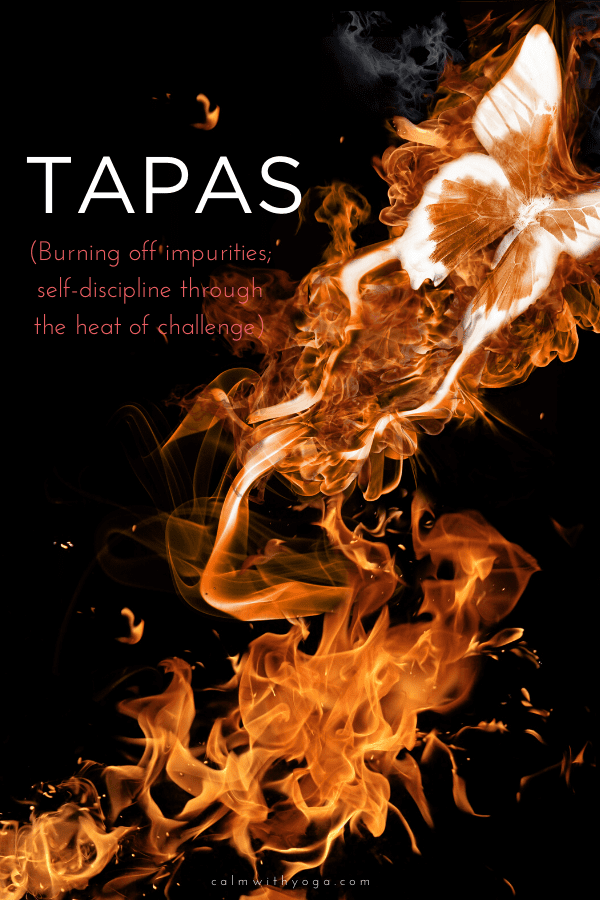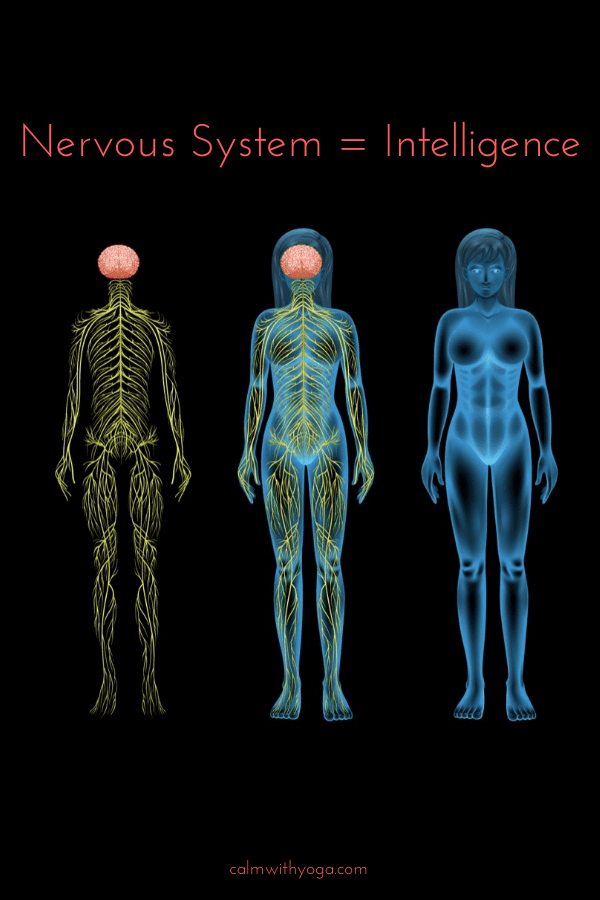Our instinctive being constantly emanates from and seeks a state of mental, emotional, physical, and spiritual equilibrium. All pain is a request or demand to us (our minds) to help restore this equilibrium. It is a positive process. – Milton Ward, author of The Brilliant Function of Pain Having studied with revered yogic masters like Swami Satchidananda, Ward’s words echo such ancient wisdom and remind us that “pain is designed to keep us well.” “Pain has astounding logic and distinct function,” he says in his book, The Brilliant Function of Pain. By cultivating what he calls “the great secret of the East,” (awareness), we can begin to understand what our pain is telling us on a deeper level. We can begin by cultivating awareness of what is. Awareness of the feeling and sensation of our pain, awareness of the feeling and sensation of the release of pain, and of the “subtle reality that underlies our apparent reality.”
In yoga practice, accepting pain as a means of purification and strengthening is called Tapas. Tapas literally means ‘heat’ and ‘to burn.’ To practice this side of yoga we must be courageous in facing our pain head-on. The next time you become acutely aware of your pain, (be it mental, emotional, physical, or spiritual), instead of resisting it or trying to immediately eradicate it, sit with it for just a moment. Bring your consciousness and awareness to it by feeling into it. And, as part of that assistance, there is work required on our part. Actually, it is a brilliant signal. It is “telling” us to do something to right ourselves… It is “telling” us what to do – minute by minute – with amazing accuracy – to prevent the more serious problems that will require radical outside help. Pain is not a terror. Quite the opposite. It reminds us that an infinitely brilliant force, our own force, is functioning on our behalf. – Milton Ward, author of The Brilliant Function of Pain This takes work because our anxious mind keeps us running loops that keep us disconnected from our bodies. Once you’ve felt into the perceived pain, ask it the question: Be still and listen. Allow the wisdom of your body to speak to you. This, says Ward, is how we develop symptom sensitivity: Your body and mind give you feedback and actually talk to you using the language of these subtle symptoms. For example, can we foretell the advent of a cold by catching the subtle discomforts that tell us to retreat from an obsessive workload, to get back to our center, to break off a masochistic attachment, to returns to a strict diet of wholesome foods? Is it possible that these measures will rebuild our resistance before the virus has a chance to gain an upper hand? Subtle pains such as aches, depressions, performance jitters, shyness are also precise signal systems. They are not afflictions or malfunctions. They are not misfortunes. – Milton Ward, author of The Brilliant Function of Pain They are light nudges saying: If you haven’t developed inner and outer body awareness and symptoms sensitivity, you’ll most probably miss these nudges. So what do your infinitely wise and loving body and mind do? They nudge harder. They go from a whisper to shouting to speak louder, in the hopes that this time, they’ll get your attention. Sometimes we are so out of touch with our own selves that we just can’t hear the messages and promptings. So it takes a breakdown of some sort to get us to wake up and become aware:
Your anxiety peaks and you have intense panic attacks or a full-blown meltdown that brings you to your knees. That subtle chronic digestive discomfort progresses into a full-blown chronic condition. You fall and hurt yourself and are forced to rest instead of pulling more 16 hour days.
There are more subtle signals. When was the last time you felt alive? It is a sense of clarity, of effortlessly riding on a subtle hum, of being at peace with the world. This is the constant aim of our brilliant being. The Yogis describe it as a spiritual state, “existing in nadam.” The scientists use the word homeostasis. How do we harness the brilliant entity or force? Is it possible that the laws that govern our psyche are as brilliant, as quick, as absolute as the laws that govern the atom or the action of light? As we study this process, (what the Easterners call the tantric function) the incessant return to equilibrium in all things including our being, we feel a growing excitement over the sanity of our inner world. It has an exalting effect on our entire outlook. – Milton Ward, author of The Brilliant Function of Pain Turned on? Stop. Close your eyes. Breathe and focus on the center of your heart. Recall the last time. Where were you? What time of day was it? What were you doing? Most of us can get so caught up in our stress, busy-ness, and daily to-do’s that we can forget what that feels like. Our stressed out, alert states can become “normal” and then the moments of flow feel foreign and few and far in between. If we could create more of the flow moments, we’d relax our bodies more, and subsequently, lean into wellness more.
There are different types of pain:
It’s definitely challenging to experience pain no matter what form it comes in – whether it’s acute pain (short term) or chronic pain (long term). Although some of us have higher pain thresholds/ pain tolerance than others, in one way or another we will all eventually experience it in one form or another. There are different kinds of pain – physical, mental, emotional, and even spiritual – and all of them play an important role in determining quality of life. Within the umbrella of physical pain, there are also different types such as postoperative pain, cancer pain, clinical pain, etc. Physical pain can also be tied to psychological factors. In fact, depression, anxiety, digestive issues, and tiredness can all intensify pain perception. But as we’ve seen, the experience of pain isn’t a “bad” thing. It can help to crack us open, to mold us, to help us make quantum leaps in order to transform and grow. Ever heard of the saying: “No pain, no gain”? The source of pain isn’t as important as you remembering that through the discomfort and suffering you’re growing… You’re gaining.
Pain Mechanisms – How the body processes pain:
Hot oil accidentally splatters on your hand while cooking – you instinctually recoil. What happened? But how does the body register pain? It starts with two branches of the nervous system: 1 – central nervous system (consisting of your brain and spinal cord) 2 – Peripheral nerves (these nerve fibers are located throughout the body and its extremities picking up signals and then relaying these signals to the central nervous system) Let’s see this in action: You step on a sharp rock. Your sensory peripheral nerves respond to this by producing chemical stimuli to determine how to interpret this sensation. Specialized pain receptors called nociceptors activate in the event of injury or even potential injury. This process is known as nociception. A noxious stimulus/ noxious stimuli are any event that actually or potentially threatens tissue damage. Noxious stimulation is a precondition for nociceptive pain. Hyperalgesia is a condition characterized by increased pain intensity or sensitivity. Neuropathic pain is thought to be caused by either disease or damage to peripheral nerves. It can be associated with a condition called allodynia, which is the sensation of pain resulting from non-painful stimuli.
Pain Management for chronic pain conditions:
It can be much easier to withstand pain when it’s short term but living with pain day in and day out is extremely challenging. And yet, chronic pain states are something that approximately 25 million adults in the United States live with daily pain according to the NIH (National Institute of Health). (1) 23 million U.S. adults live with severe pain/ intense pain. Chronic and persistent pain is defined as any pain lasting over 12 weeks or three months. Common health care options for pain treatment are aimed at pain management rather than pain cure. Common pain medications are of two kinds:
NSAIDs (nonsteroidal anti-inflammatory drugs) – ex: aspirin Opioids – ex: morphine
It’s important to note that both types come with serious side effects especially when used chronically. They also don’t always work effectively and what’s worse can cause addiction and damage to organs like kidneys and the stomach. This is why chronic pain patients ranging from low back pain to fibromyalgia are turning to alternative pain management therapies such as physical therapy, breathwork, meditation, acupuncture, and yoga.
- For more resources and information on pain management check out the IASP – Pain Research International Association for the Study of Pain whose mission is to work together for pain relief throughout the world. REFERENCES : (1) https://nccih.nih.gov/research/statistics/NHIS/2012/pain/severity


